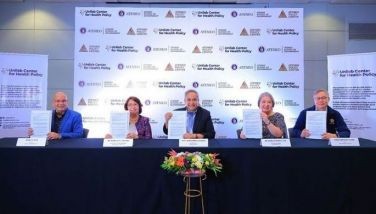EDITORIAL - Water security
From 1990 to 2010, access to drinking water has improved for 91 percent of people living in Asia, according to a study published last Wednesday by the Asian Development Bank. This is an impressive achievement for the region. The bad news is that water security remains elusive for all the developing countries in the Asia-Pacific, undermining development gains and the quality of life, according to an official of the Asia-Pacific Water Forum governing council.
Up to 65 percent of the region’s population still lacks a secure household supply of tap water. The ADB noted that while most cities in Asia, which account for about half of the world’s 20 megacities, have the infrastructure needed for domestic water treatment and supply, safe water is not available around the clock and many households still lack piped water.
Lack of access to safe water has been blamed for up to 88 percent of all diarrhea cases in the region. Many areas still suffer from inadequate sanitation facilities. While there has been some improvement since 1990, an estimated 1.74 billion people in the Asia-Pacific still lack sanitation facilities, with about 792 million, mostly in South Asia, still defecating in the open.
The problem is felt in the Philippines, where there are still households even in Metro Manila that lack 24-hour safe water supply. Most households in impoverished communities lack piped water. In many parts of the country, a campaign to promote health and hygiene among children through regular hand washing has been derailed by inadequate piped water and sanitation facilities in many households and public schools.
The ADB is emphasizing the need to improve management of water resources and promote universal access to safe water. This echoes calls made by other agencies that have conducted studies on the same subject in the past. For millions of people in the region, particularly the poor, this is a problem begging for urgent action.
- Latest
- Trending






























